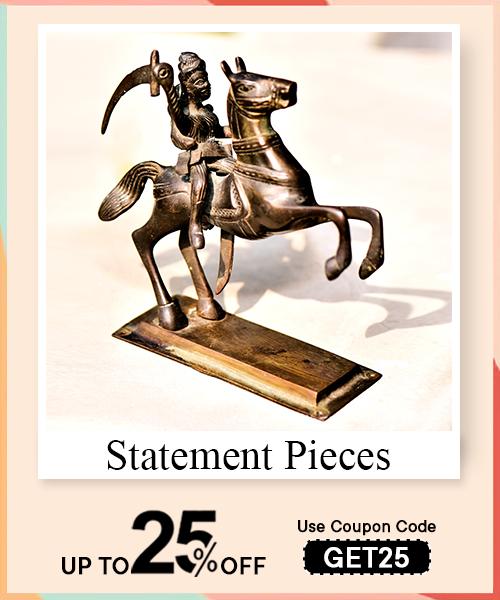Pongal is one of South India's most well-known harvest festivals, especially in Tamil Nadu. Every year, Pongal, which occurs in the middle of January, celebrates the auspicious start of Uttarayan, the sun's journey north. Four days pass during the Pongal festival. Tamil Nadu's four-day event aims to honour the natural world. Pongal, which translates as "spilling over," got its name from the custom of boiling rice in a pot until it began to overflow. Drawing a Kolam, swinging, and making delectable Pongal are other customs related to the event. Like Lohri in North India and Makar Sankranti in West India, the harvest festival known as Pongal is celebrated in South India. The Pongal holiday, which is greatly respected by Tamilians everywhere, inspires feelings of joy and unity.
When the sun is at its furthest point in the southern hemisphere and is starting to travel back towards the northern hemisphere, as indicated by the Hindu calendar, it occurs in the winter months. Pongal 2023 begins on January 15; Pongal will last until January 18. The Pongal celebrations are significant to Tamilians.
Beautiful decorations add to the joy and beauty that this holiday gives.
Create stunning rangoli patterns for your house or courtyard entrance. To create rich designs, use coloured powders, rice flour, or flower petals. The design can feature traditional Pongal elements like peacock rangoli, sugarcane, pots, the sun, and cows.
To create a festive atmosphere, illuminate your home with vibrant string lights. Attach them around pillars, windows, or door frames to provide a pleasant and welcoming light. Use warm white or yellow lights to produce a soothing, welcoming glow, or use multicoloured lights to give your décor an energetic touch. String lights are a fantastic choice for indoor and outdoor Pongal celebrations because of their versatility.
Read More : THE HISTORY AND SIGNIFICANCE OF PONGAL: PONGAL 2023
Tamil Nadu is known for its skills in creating kolams, or rangolis. Hindus worship cows, which are considered to be sacred animals, during the Pongal festival. To make kolam (rangoli) designs that resemble cows, get imaginative. With Kolam, your house will appear lovely. Using coloured powders or rice flour, create kolam patterns on the ground. These complex geometric designs are thought to fill the home with good energy and symbolise prosperity.
A clay pot is used for cooking Pongal. To brighten up the appearance of your Pongal decorating, you may add some bright beads and designs to the pot. Use vibrant colours, kumkum (vermilion), and turmeric to brighten up a clay or metal pot (Pongal pot). Tie ribbons, bells, or little ornaments to make the pot look prettier. Place the decorated pot in the Pongal cooking area or at the front of your house as the centrepiece.
Decorate with fresh banana leaves to decorate your entryway, walls, or pillars. They can be weaved together to create garlands or torans. Banana leaves give the decor a hint of freshness and classic appeal.

Since sugarcane plays a significant role in the Pongal celebrations, it is a wonderful backdrop for creating beautiful decorations. You can even decorate the walls of your home with paper-crafted sugarcane.
Pongal Rangoli Stencils
You can use Pongal-themed rangoli stencils to make detailed designs if you desire a more organised approach. These stencils are commonly accessible in the market, or cardboard can be used to make them at home.
To make brilliant flower garlands and arrangements, use colourful flowers like marigolds, jasmine, and roses. To add aroma and beauty to your home, place them in vases or hang them from various places throughout the space.
Hang traditional artwork or paintings on the walls that feature Pongal-related subjects. These can show the Sun God, harvest landscape, or pictures of farmers. These pieces of art not only add visual interest but also convey the festival's history and significance.
Candles and diyas are also vital to the Pongal celebrations. You can choose from various sizes and forms of classic clay diyas or more modern designs made of metal or glass diya. Candles are great for establishing a warm ambience because they are available in various colours and scents. To increase the celebratory atmosphere, put them in lanterns, on windowsills, or close to the Pongal pot. Remember to turn them on at night to create a cosy and welcoming atmosphere.
Read More : WHAT IS VAISAKHI OR BAISAKHI? ALL YOU NEED TO KNOW ABOUT THIS FESTIVAL.
Decorate with religious symbols like the Om or the Swastika. The space might have a spiritual atmosphere by adding these symbols, which have a significant religious significance, such as wall hangings, works of art, or ornamental items.
The Pongal feast contains cardamom, raisins, split green gramme, jaggery, and cashew nuts in addition to rice and milk. It can be either sweet or salty. The meal is prepared in the sunlight, usually on a porch or courtyard, in homage to the Sun god, Surya. The finest part is that, although served on banana leaves, the food is gorgeously presented.
The important dish in this feast is the Ven Pongal. A famous South Indian dish, Ven Pongal, is frequently made during the Pongal festival and enjoyed year-round. It is a tasty and warming dish of rice and lentils cooked with aromatic spices. Rice and split yellow moong dal are cooked together to make Ven Pongal. The flavours of the mustard seeds, cumin seeds, black peppercorns, curry leaves, and ginger are released by roasting them in ghee (clarified butter), which has been cooked. After adding salt and this heating, the cooked rice and lentils are well combined. Rice and lentils are combined to create a creamy and flavourful dish, often served hot with coconut chutney, sambar (a lentil-based vegetable stew), or a side of pickles. In addition to being delicious, Ven Pongal has a decent ratio of proteins to carbohydrates, making it a filling and healthy meal.
Read More : WHEN IS UTKAL DIVAS, MEANING, THEME, IMPORTANCE
The epic story of Lord Shiva and his bull, Nandi: Hindu legend states that he once sent his bull, Nandi, to Earth to communicate with people. Nandi, who became famous for his love of food, accidentally advised people to eat once a month, which infuriated Lord Shiva. Nandi was sent to Earth as a punishment by Lord Shiva, who instructed him to plough the fields and assist people in producing more food. As a gesture of praising the bull for his contribution to agriculture and food production, Pongal is celebrated.
According to the Bhagavata Purana, Lord Krishna raised Govardhan Hill to shield the citizens of Vrindavan from the rain god Indra's anger. Krishna convinced the peasants to worship Govardhan Hill rather than continuing to dedicate their harvest to Indra. Krishna lifted the Govardhan Hill on his little finger to provide refuge for the villagers and their farm animals as Indra sent rainstorms to flood the village in revenge. This story is an analogy for the value of agriculture and the natural world in supporting human existence, represented in the Pongal celebration.
In Hindu mythology, Kamadhenu, the holy cow, came from the swirling of the universe as a wish-fulfilling cow. It is believed that Kamadhenu appeared during the Pongal celebration to bring prosperity and abundance to the people. This story illustrates the value of cattle in agriculture and the necessity of animals for producing dairy goods and cultivating fields.
Read More : GUDI PADWA: THE SIGNIFICANCE AND TRADITIONS OF THE FESTIVAL
Tamil Nadu, a state in southern India, celebrates and takes time off during the Pongal holidays of 2023. The harvest festival known as Pongal is traditionally celebrated for four days, during which people take time off from their regular schedules to participate in various celebrations and spend quality time with family and friends.
People gather to enjoy the richness of the harvest season during the Pongal festivities, defined by a spirit of joy and unity. A bonfire represents the beginning of a new beginning and an end of negativity during Bhogi Pongal, which kicks off the celebrations. On Thai Pongal, the primary day of Pongal, people cook special Pongal food, worship the Sun God, and welcome and give gifts to their loved ones. Families get together during this occasion, dress traditionally, and eat a delicious meal. The smell of freshly prepared Pongal fills the air, and homes are decorated with lovely rangoli patterns.
Cattle are honoured on the festival's third day, Mattu Pongal, as they are crucial to agriculture. Special pujas (worship) are performed to show gratitude for their sacrifices, and cows and bulls are decorated with garlands, vermilion, and turmeric. The celebrations are made more exciting and significant by organising traditional bull races and other livestock-related events.
Read More : HAPPY UGADI, SIGNIFICANCE AND CELEBRATION
Kaanum Pongal, the last day, is a day for leisure and fun. Families frequently organise trips, picnics, and visits to beautiful locations like temples. The day is packed with fun activities like kite flying, cultural shows, and indulging in regional food. Schools, offices, and government buildings are all closed throughout the Pongal holidays so that people can fully immerse themselves in the event. It's a time for growth, self-awareness and completing all the loose ends in society. The Pongal holidays offer a chance for people to show their praise, get in touch with their cultural roots, and learn about Tamil Nadu's rich customs and history.















